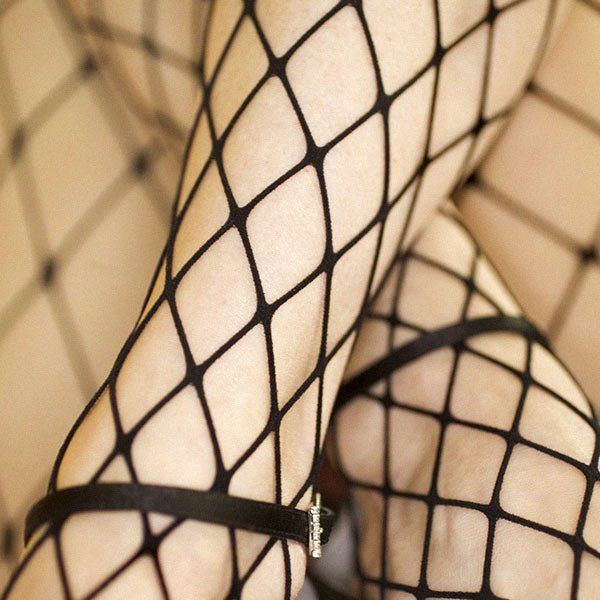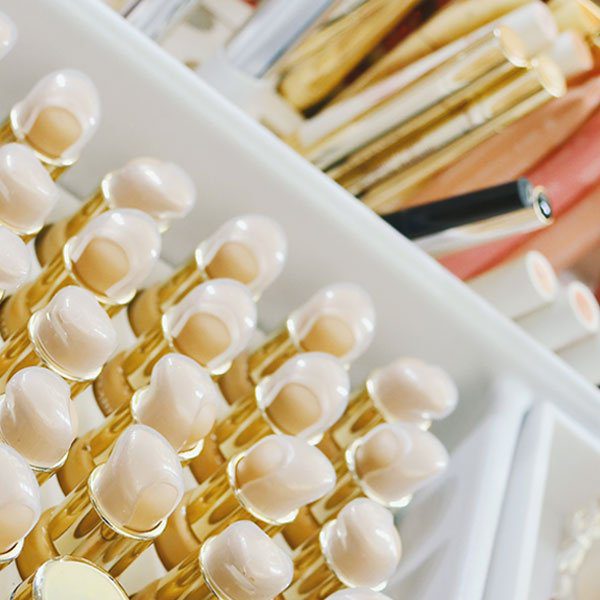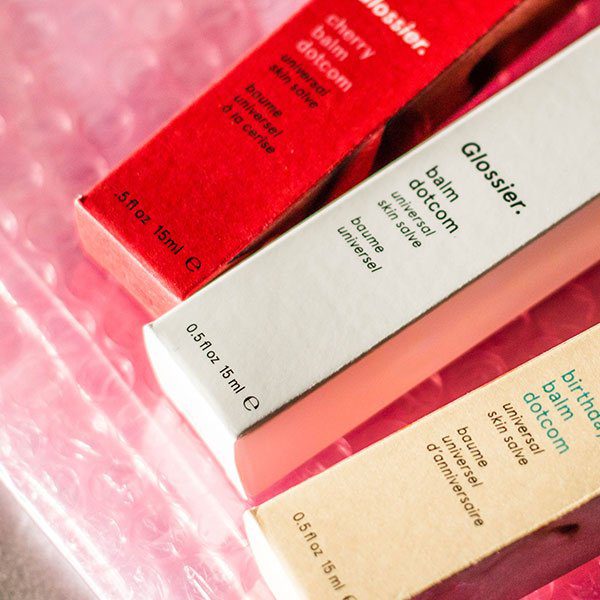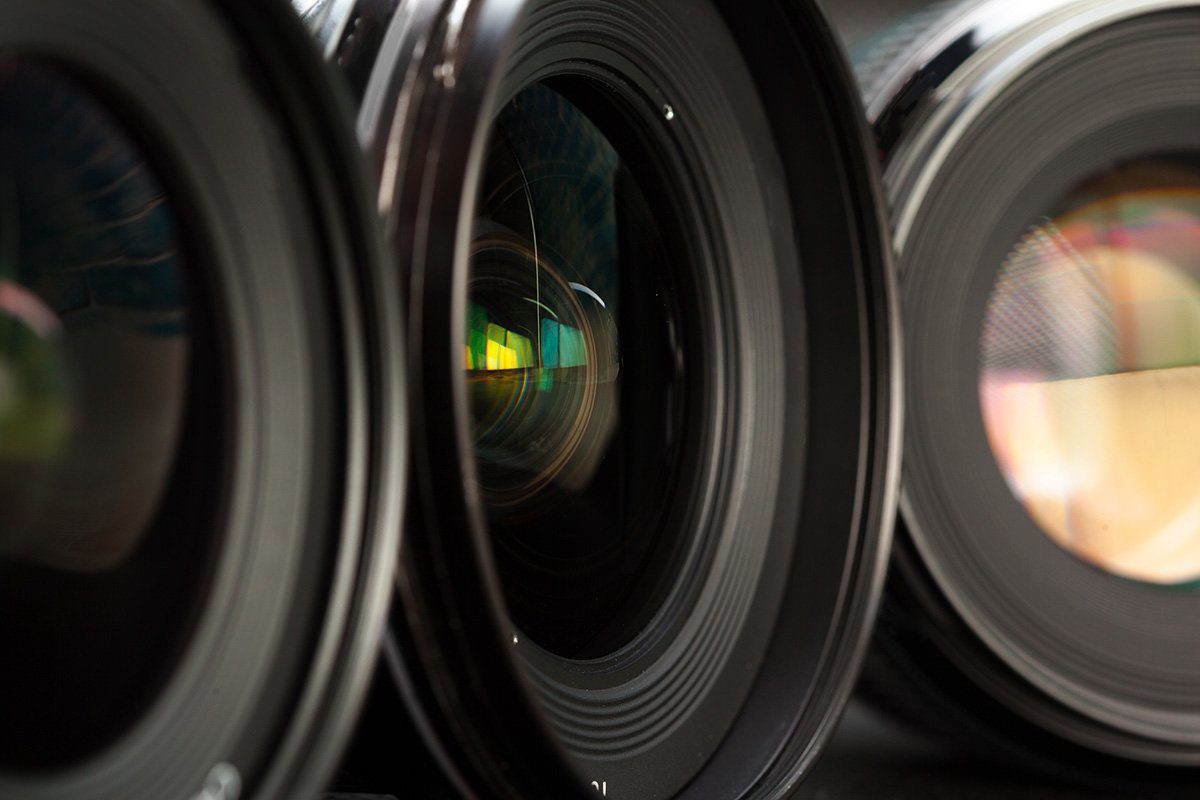
Lens Choice In Boudoir Photography
oudoir photography is an ethereal dance of sensuality and sentiment, a celebration of self, body, and spirit. It isn’t simply about capturing moments; it's about sculpting narratives. Each click of the shutter, each play of light, every whispered secret revealed is a testament to the profound allure of boudoir. It goes beyond conventional photography; it's an art form that cherishes the raw, the real, and the resplendent.
Lenses: The Silent Artisans of Every Tale
Think of a lens not as a mere component of a camera but as the storyteller’s quill. It’s not just capturing an image; it’s interpreting the world, translating a photographer’s vision, and molding an emotion. In boudoir, where the subject is as intimate as the narrative, the lens becomes the bridge connecting an artist’s intent with the essence of the muse. It frames stories, crafts depths, and paints feelings, solidifying its pivotal role in the realm of boudoir.
“Choosing the right lens can make all the difference in capturing stunning and captivating images. From flattering perspectives to creating a sense of intimacy, the lens choice shapes the outcome of your photoshoot. Discover the power of selecting the perfect lens and unleash the magic in your photography. Get ready to create unforgettable moments! “
At its core, a lens is a meeting of science and wonder. Its role extends beyond mere functionality. A lens has the capacity to amplify emotions, to bend and play with light in ways that transform ordinary moments into indelible memories.
The soft blur of a background, the sharpness of an eyelash, the dreamy bokeh of city lights—these aren’t just aesthetic choices. They’re powerful tools in the artist’s arsenal, ones that, when wielded with precision and intent, can elevate boudoir photography from a mere image to a masterpiece of emotion and expression.
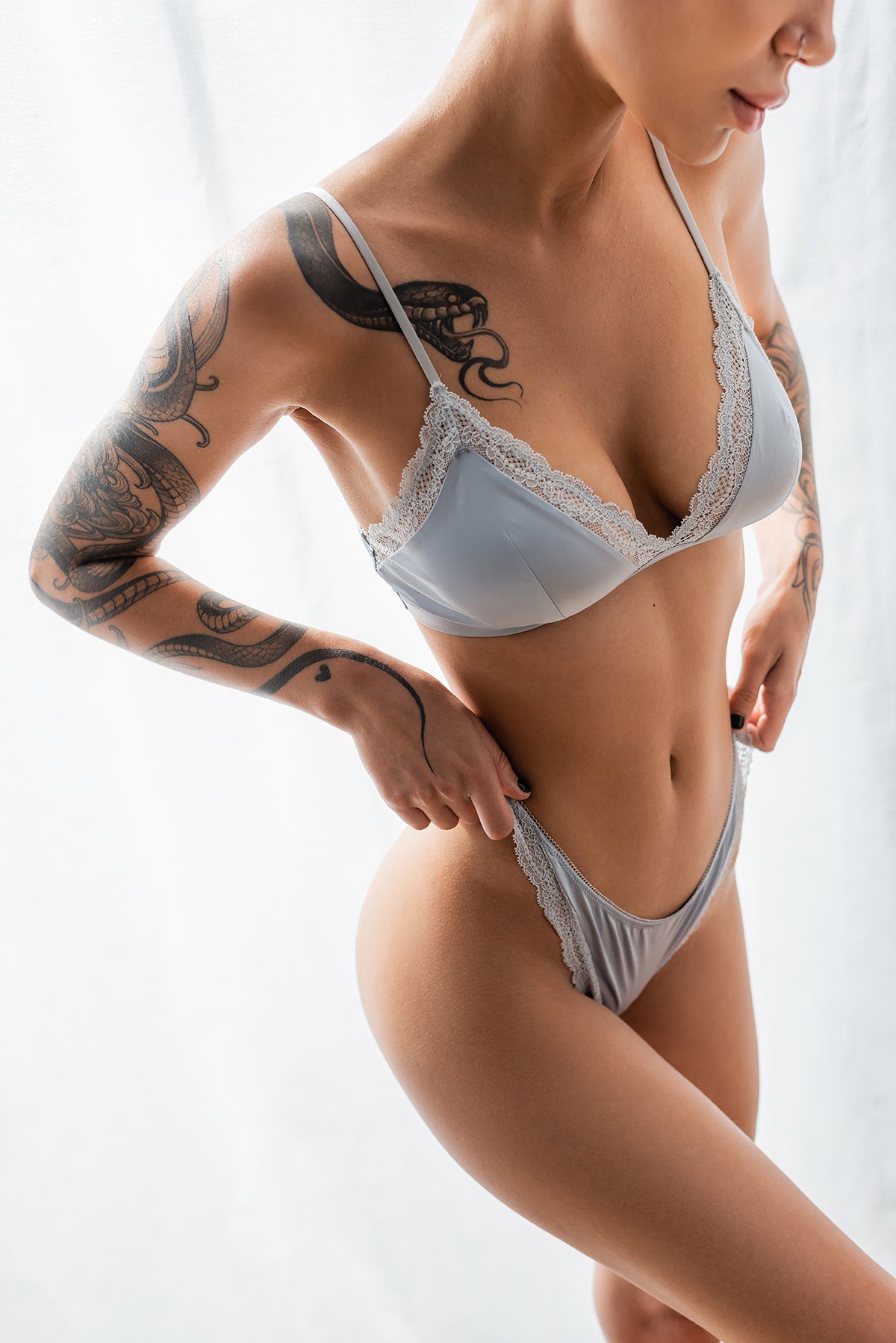
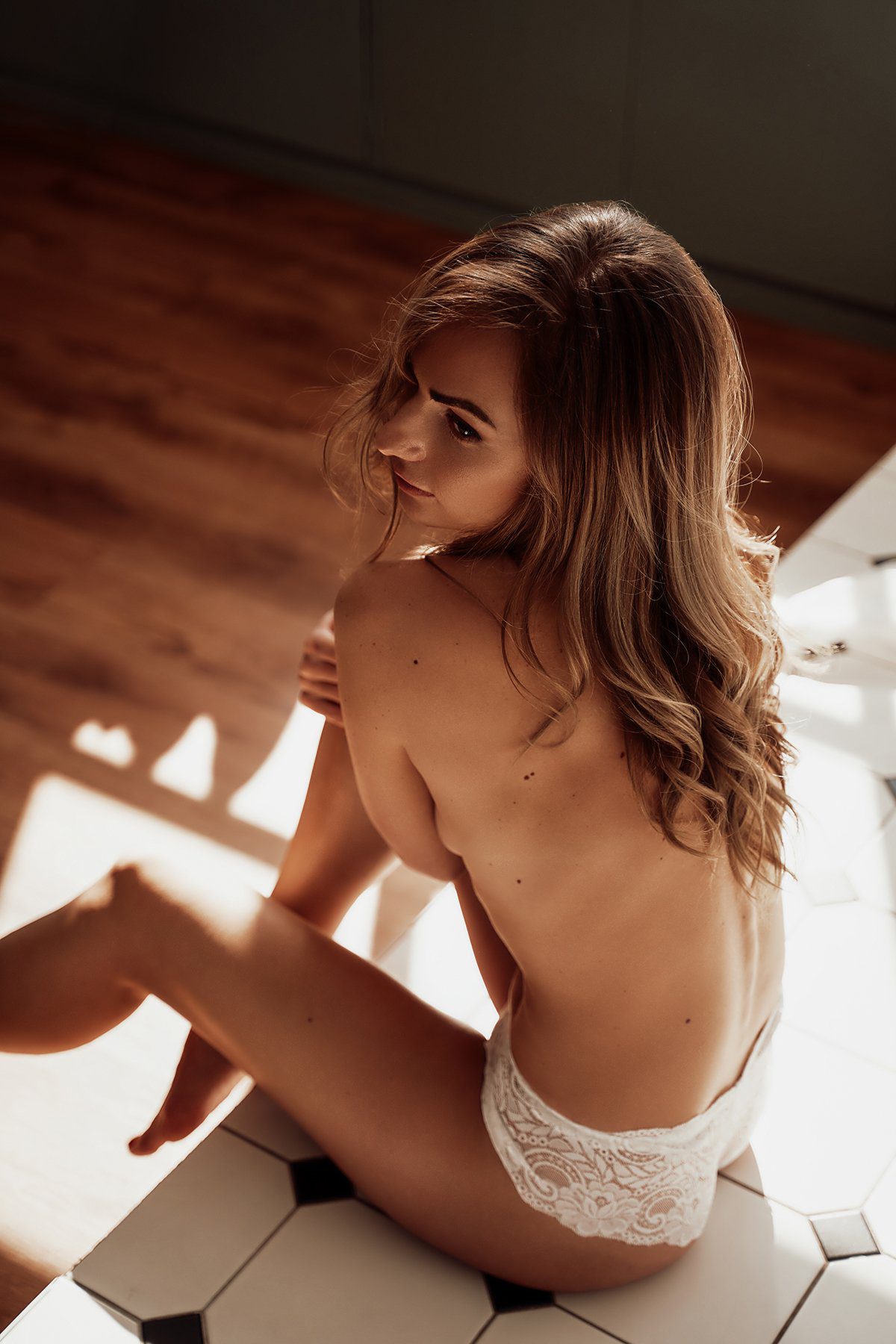
The Science and Art of Lenses: A Primer
Journeying Into the Heart of a Lens: Where Physics Meets Passion
To appreciate the magic a lens can conjure, one must first understand its soul—a harmonious blend of science and art. Just as an artist knows every bristle of their brush, a photographer must recognize the intricate components and mechanisms that breathe life into their vision.
Decoding the DNA of a Lens: Functionality Unveiled
At its most basic, a lens is a series of curved glass elements designed to gather and focus light onto the camera’s sensor. But this mechanical explanation belies the vast potential housed within these glass confines. The focal length of a lens, measurable in millimeters (mm), dictates its angle of view—the amount of the scene the lens can capture. Moreover, the aperture, often represented as an “f-number”, controls the amount of light entering the lens. Together, these features collaborate to craft the very fabric of the resulting image, defining its sharpness, brightness, and depth.
Shaping Dreams and Realities: Depth of Field Deciphered
Imagine a canvas where the artist can consciously choose which elements remain sharp and which ones dissolve into soft blurs. That’s the depth of field (DOF) in photography. Governed primarily by the lens’s aperture, DOF determines the range within an image that appears acceptably sharp. A shallower DOF, often achieved with wider apertures, ensures that the subject remains crisp while the background (and sometimes the foreground) becomes a gentle, aesthetic blur.
Aperture’s Double Game: Crafting Bokeh & Spotlighting Subjects
The term ‘bokeh’ might sound like a photographer’s poetic license, but its roots lie deep within the lens’s aperture. Originating from the Japanese word for ‘blur’, bokeh refers to the aesthetic quality of the out-of-focus areas in an image. Lenses with wide apertures, such as f/1.4 or f/1.8, are adept at producing dreamy, buttery bokeh, making the subject pop against a beautifully blurred background. This effect isn’t just visually pleasing; it serves to isolate and emphasize the subject, directing the viewer’s eye precisely where the artist intends.
Dancing with Light: The Harmony of Luminance and Precision
Every lens faces a delicate balancing act. While a wide aperture lets in a flood of light, ensuring brighter images in dim conditions, it can also introduce optical challenges, potentially compromising sharpness. Conversely, smaller apertures, like f/8 or f/11, offer greater sharpness across the frame but demand more light for optimal results. Mastering this dance between light intake and image clarity is crucial for boudoir photographers, where every detail can make a difference, adding layers to their stories.
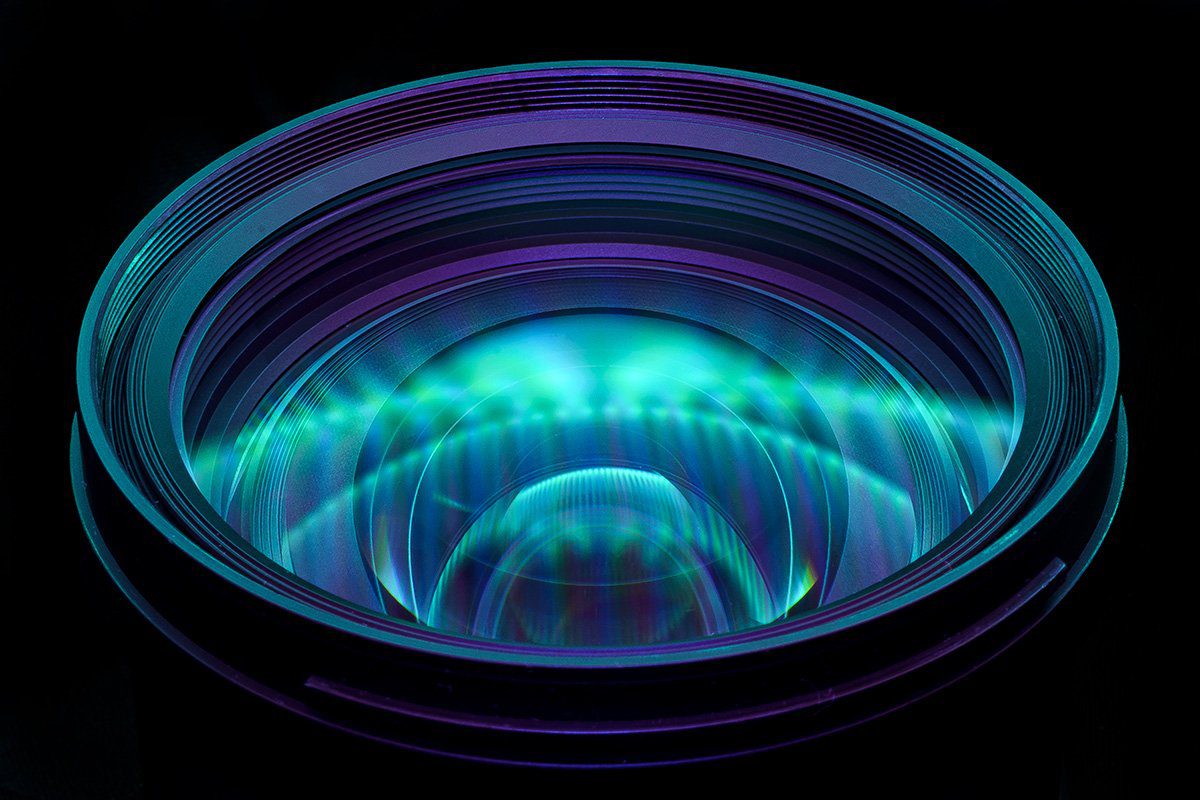
The Spectrum of Lenses: Which One for Which Shot?
Prime Lenses: Crafting Intimacy with Precision and Depth
Prime lenses, with their fixed focal lengths, are the purists of the lens world. Unburdened by additional mechanics needed for zooming, they shine in sharpness and clarity.
Unearthing the Heartbeat of Boudoir with Prime Lenses
There’s a reason prime lenses, particularly the 50mm and 85mm, are often dubbed the ‘portraiture workhorses’. Their ability to deliver impeccable sharpness makes them excellent choices for boudoir photographers, ensuring every intended detail is vividly captured. These lenses truly shine in controlled environments, like studios, where the emphasis is on close-ups, facial details, or even a stray lock of hair floating in the breeze.
Stars of the Prime World: The Quintessential 50mm f/1.4 and Dreamy 85mm f/1.8
The 50mm f/1.4, often referred to as the ‘nifty fifty’, is lauded for its versatility and stunning bokeh. It strikes a balance between intimacy and environmental context. On the other hand, the 85mm f/1.8 offers a slightly telephoto perspective, perfect for close-ups while maintaining a comfortable distance, making it a go-to for many boudoir photographers.
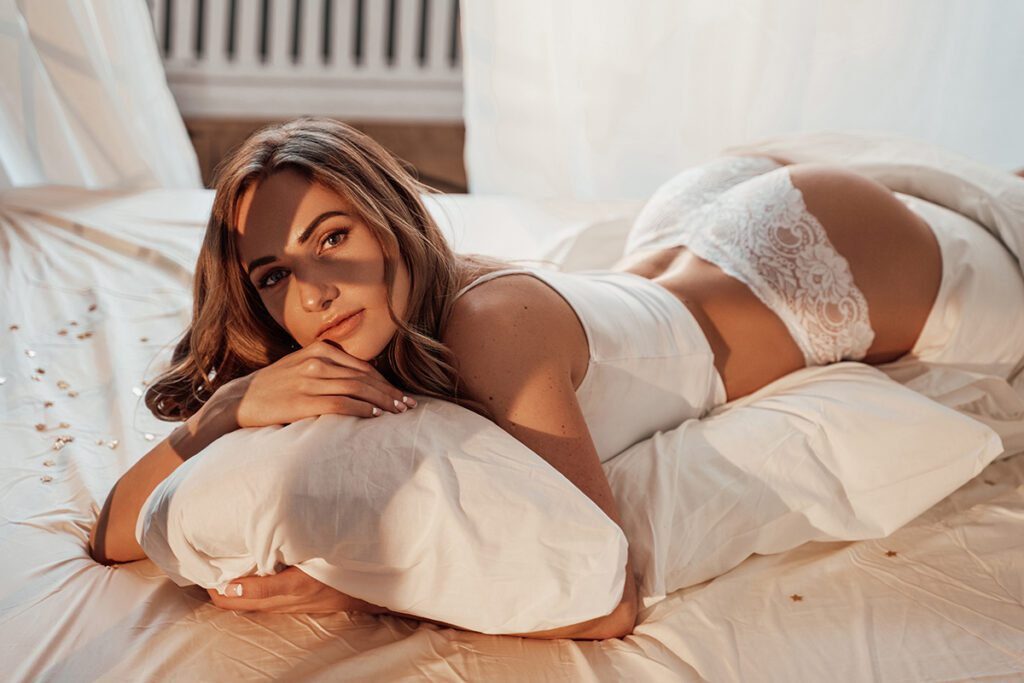
Zoom Lenses: Embracing the Dance of Distance and Dynamics
Not limited to a fixed focal length, zoom lenses offer flexibility, enabling photographers to swiftly adjust to changing scenes and moods without the need for lens changes.
Boudoir’s Dynamic Dance: Where Zoom Lenses Steal the Show
Boudoir sessions aren’t always predictable. They can range from intimate close-ups to wider shots that capture the ambiance of the setting. Zoom lenses, especially the likes of 24-70mm or 70-200mm, are apt for such variability. Whether you’re navigating the constraints of a smaller room or leveraging the expanse of a luxurious suite, zoom lenses ensure you’re always ready.
Pioneers of Versatility: The Adaptable 24-70mm f/2.8 and Telephoto Charm of 70-200mm f/2.8
The 24-70mm f/2.8 lens, with its wide-to-telephoto range, adapts seamlessly to diverse boudoir setups, ensuring sharp, high-quality images. Conversely, the 70-200mm f/2.8, with its extended reach, is perfect for intimate shots from afar, ensuring the subject’s comfort.
Wide-angle Lenses: Weaving Stories with Space and Spectacle
With their expanded field of view, wide-angle lenses are adept at capturing more of the environment, making spaces feel grand and expansive.
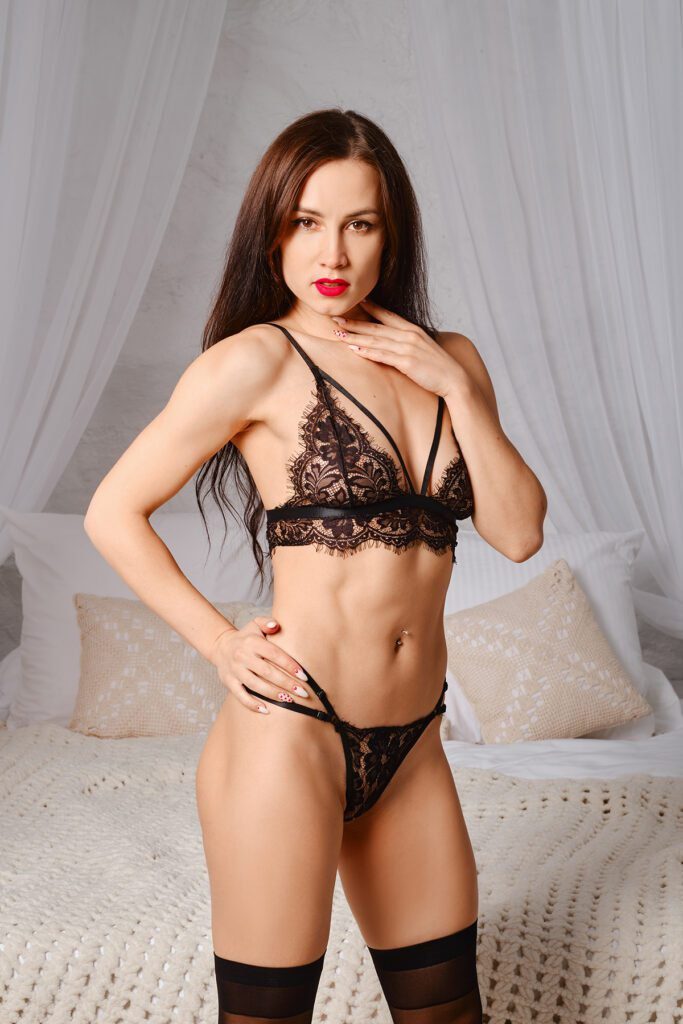
Boudoir Grandeur: Crafting Epics with Wide-angle Lenses
In scenarios where the setting is as much a character as the subject—like a vast, opulent bedroom or a vintage-themed setup—wide-angle lenses, such as the 35mm, allow for incorporating the surroundings beautifully, making the setting an integral part of the narrative.
The Landscape of Intimacy: 35mm f/1.4
A favorite among many, the 35mm f/1.4 offers a perspective that’s wide enough to capture more of the scene but narrow enough to maintain a sense of intimacy, delivering stunningly sharp images filled with detail.
Macro Lenses: The World in a Grain of Sand
Macro lenses specialize in the minute, the intricate, and the often-overlooked. They magnify life, bringing forward the tiniest of details with astounding clarity.
Boudoir’s Hidden Treasures: Magnifying the Minuscule with Macro Lenses
Whether it’s the delicate lacework of lingerie, the glint of a diamond earring, or the intricate patterns of a tattoo, macro lenses allow boudoir photographers to spotlight these details, creating images that are profoundly intimate and telling.
Detailing Desires: The 100mm f/2.8 Macro
A classic in the macro realm, the 100mm f/2.8 offers a balance between working distance and magnification. It not only excels at capturing minute details but also serves well for portraits, making it a versatile tool in a boudoir photographer’s arsenal.
Scenario-based Recommendations: Tailoring Your Toolkit to the Tale
Intimate Close-ups: Capturing the Soulful Whispers
Delving Deep with the Right Lens
When aiming for those deeply personal, soul-searching close-ups, prime lenses, especially the 50mm f/1.4 and the 85mm f/1.8, truly shine. Their ability to present a subject without distortion and their proficiency in blurring out distractions with a creamy bokeh makes them unmatched for these intimate shots.

Crafting Intimate Moments: Tips for Execution
- Eyes as Windows: Focus sharply on the eyes, letting them narrate the tales.
- Mind the Angles: Angles can make or break a close-up. Play with perspectives to find the most flattering and emotive angles.
- Use of Soft Light: Gentle, diffused lighting can add an ethereal quality to close-ups, emphasizing their intimate nature.
Full-body and Environmental Shots: Framing Elegance Amidst Ambiance
The Broad Strokes: Choosing Lenses for Grandeur
For those shots where the entirety of the subject, along with the ambiance of their surroundings, plays a role, the versatility of zoom lenses like the 24-70mm f/2.8 and the environmental inclusivity of wide-angle lenses like the 35mm f/1.4, come to the forefront.
Setting the Stage for Panache: Tips for Setting the Scene
- Harmonize Subject and Setting: Ensure that the subject and their environment complement each other, neither overshadowing the other.
- Use Leading Lines: Architectural elements, furniture, or decor can be used to guide the viewer’s eye towards the subject.
- Play with Depth: Use foreground and background elements creatively to add layers to your shot and create a sense of depth.
Experimental and Artistic Endeavors: The Uncharted Realms of Boudoir
When it comes to pushing the boundaries of traditional boudoir, a mix of lenses can come into play. The macro lens, like the 100mm f/2.8, can magnify textures and details in an abstract manner, while a wide-angle lens can provide an exaggerated perspective for a unique take on boudoir.
Redefining Boudoir: Pushing Boundaries in Boudoir Photography
- Experiment with Overlays: Use materials like lace, glass, or even water droplets with a macro lens to introduce interesting textures and patterns.
- Distorted Perspectives: Use the natural distortion of wide-angle lenses to your advantage, creating surrealistic and intriguing compositions.
- Merge Shadows and Light: Play with dramatic lighting to introduce abstract forms, silhouettes, and shadows, taking boudoir into a realm of artistry and mystery.
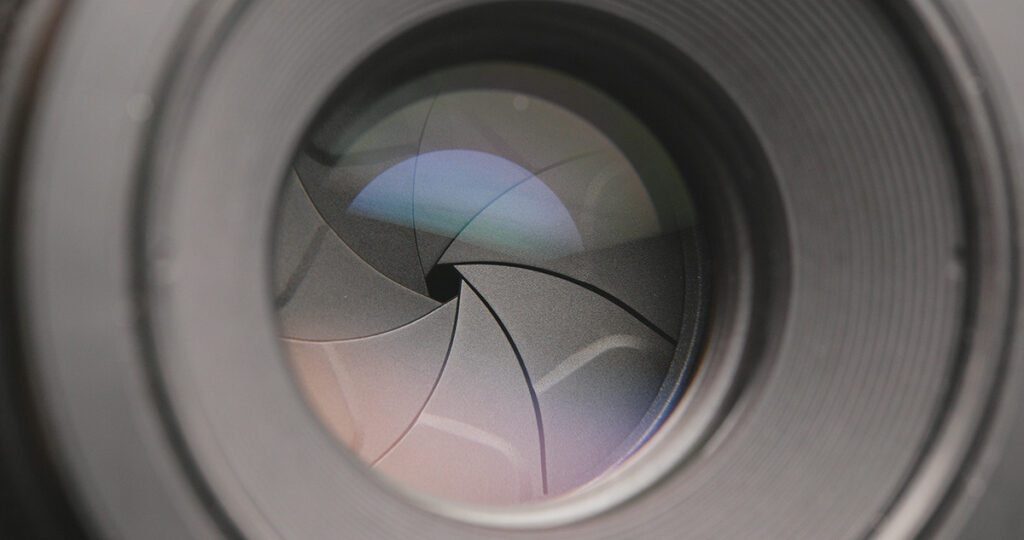
Practical Tips for Lens Use in Boudoir Photography: Beyond Basics to Mastery
Maintaining Comfort and Distance: The Delicate Dance of Intimacy
Ensuring Trust through Distance
In the intimate setting of boudoir photography, ensuring the subject’s comfort is paramount. While it’s essential to capture the essence of the moment, respecting boundaries and ensuring a relaxed atmosphere is equally crucial. Using lenses with longer focal lengths, such as the 70-200mm f/2.8, enables photographers to maintain a respectful distance while still getting close-up shots. This fosters an environment of trust, allowing the subject to be themselves, easing into poses and expressions naturally.
Crafting Atmosphere with Lenses: Setting the Stage for Sensuality
The Art of Atmospheric Crafting
Lenses don’t just capture the subject; they also play a pivotal role in establishing the mood of the shot. A wide aperture can blur out background distractions, focusing solely on the subject, while a smaller aperture can incorporate more of the environment, setting a broader narrative context. Play with light and shadows, use the bokeh creatively, or emphasize textures — the lens is your paintbrush, and the atmosphere, your canvas.
Predicting Lens Behavior: Navigating the Nuances
Anticipating the Unexpected
All lenses, no matter how high-end, have their quirks. Whether it’s the barrel distortion in wide-angle lenses or the chromatic aberration in some prime lenses when wide open, understanding and anticipating these behaviors can turn potential pitfalls into creative opportunities.
- Know Your Equipment: Regularly use and test your lenses in various conditions to understand their strengths and limitations.
- Post-Processing Magic: Remember that minor distortions or aberrations can often be corrected in post-processing, so don’t be disheartened if you don’t get it perfect in-camera.
- Embrace Imperfections: Sometimes, the imperfections introduced by a lens can add character to an image, giving it a unique flavor that sets it apart.
Remember, boudoir photography is not just about technique; it’s also about emotion and connection. While lenses and their technical prowess aid in capturing those moments, it’s the artist behind the camera who truly brings them to life.
In Retrospect: The Symphony of Lens and Artistry in Boudoir
Reiterating the Power of the Right Lens Choice: Crafting Magic One Shot at a Time
In the world of boudoir photography, the lens is more than just a piece of equipment—it’s a gateway to storytelling, a bridge that connects raw emotion with artistic expression. The choices you make in lenses can amplify the narrative, crafting visuals that resonate, linger, and evoke. The right lens not only captures the intimacy of the moment but also magnifies its essence, making it a shared experience between the artist, the subject, and the viewer.

Encouragement to Experiment and Find One’s Unique Style: The World Through Your Lens
There’s no ‘one-size-fits-all’ in art. Boudoir photography is an intimate journey, and every artist has their unique way of seeing and showcasing beauty. While this guide has presented the basics, the real magic lies in breaking boundaries, experimenting, and finding a style that’s uniquely yours. So, venture beyond the conventions, play with different lenses, and let your creativity roam free.
Closing Thought: The Melody of Vision and Equipment
Boudoir isn’t just about the beauty in front of the lens but also the vision behind it. And while lenses are pivotal tools in this craft, they are but instruments waiting to be wielded by the maestro. The real essence of boudoir lies in the harmony between the artist’s vision and the tools at their disposal. Embrace this synergy, and you’ll find that every shot becomes a masterpiece, every narrative a timeless tale.



